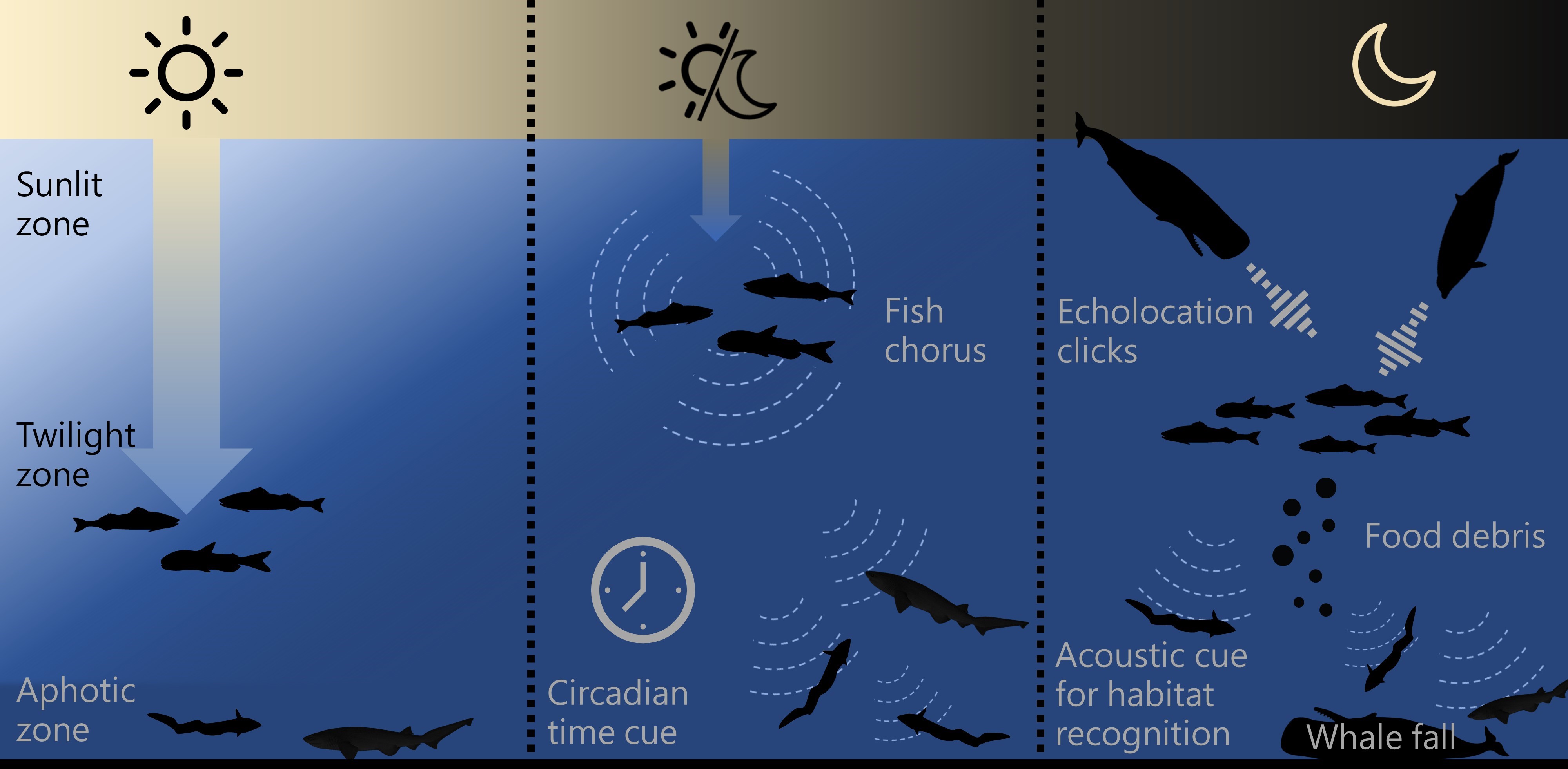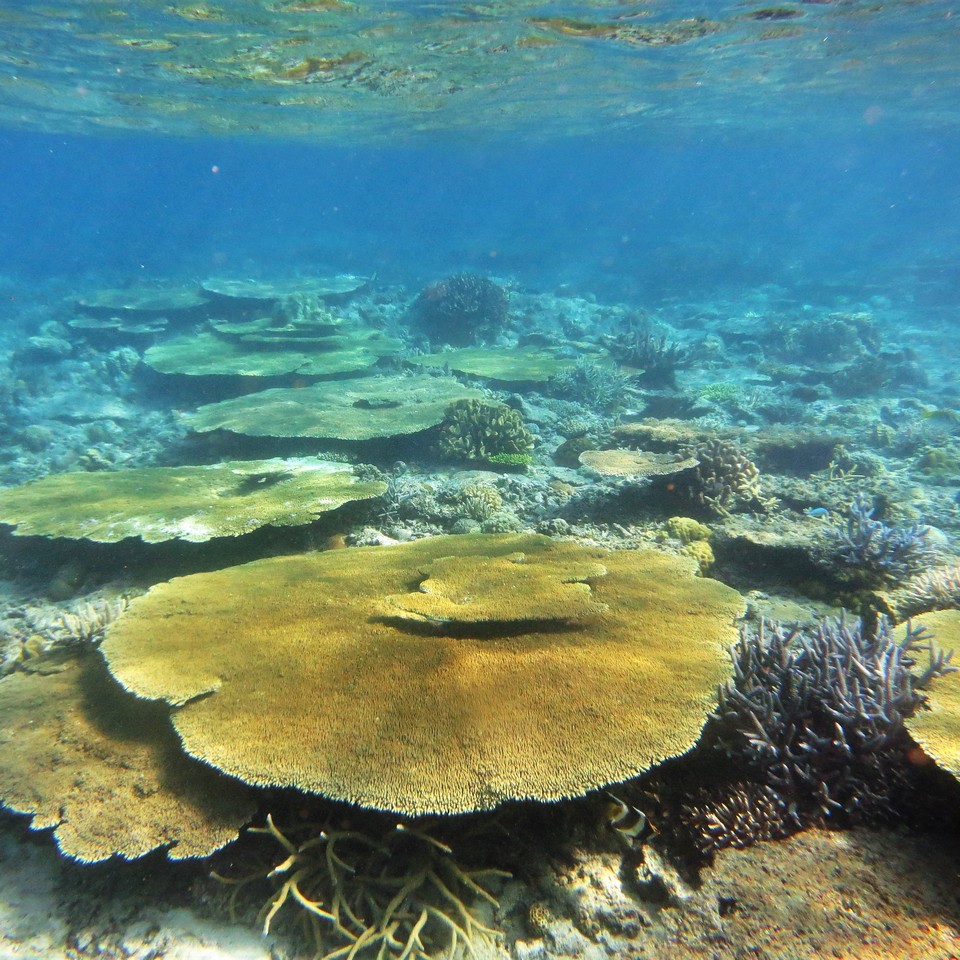
Acoustic twilight: A year-long seafloor monitoring unveils phenological patterns in the abyssal soundscape

1.This year-long study, conducted at a depth of 5552 m off Minamitorishima Island, Japan, reveals evident diurnal and seasonal patterns in the abyssal plain soundscape, challenging the traditional view of the arrhythmic deep-sea environment.
2. Evening choruses, likely produced by mid-water fish were detected. As these choruses penetrate the aphotic zone, they may act as a circadian time cue for deep-sea organisms. Additionally, the echolocation clicks of cetaceans could offer environmental cues to guide deep-sea scavengers toward food debris and whale falls.
3. Analyzing the soundscape not only advances our understanding of dynamic deep-sea ecosystems but also highlights the potential significance of underwater sound in the chronobiology of deep-sea life.
The ocean's sunlit zone typically extends to a depth of 200 m, with the region between 200 and 1000 m known as the twilight zone. Below 1000 m lies the deep sea, where sunlight is nearly absent. Due to the prevailing conditions of perpetual darkness, low temperatures, and high pressures, the deep sea has long considered a realm devoid of rhythms. However, recent studies have uncover rhythmic activities in deep-sea organisms, challenging the conventional belief in the deep sea's arrhythmic nature. Nevertheless, understanding the environmental cues that drive the rhythmic activities of deep-sea animals remains a paramount question in chronobiology.
To explore the dynamics of deep-sea habitats, Dr. Tzu-Hao Lin from the Biodiversity Research Center and Dr. Shinsuke Kawagucci from the Japan Agency for Marine-Earth Science and Technology conducted a comprehensive analysis of year-long underwater recordings obtained off Minamitorishima Island in the Pacific Ocean. The results were astounding. Even at a depth of 5552 meters, the hydrophone captured a diverse array of sounds, including typhoon-induced wave noise and a diverse array of biological sounds. Temporal analysis further revealed evident diurnal and seasonal patterns in the abyssal plain soundscape.
In particular, from sunset to midnight, two distinct choruses influenced the soundscape during winter, spring, and summer, giving rise to what the research team coined as "acoustic twilight." Corroborating with previous studies, similar choruses were found to be distributed across depths in the Indo-Pacific, suggesting a large-scale bio-oceanographic phenomenon rather than a localized event. Although the precise identity of the chorusing animals remains a mystery, the researchers hypothesize their involvement in diel vertical migration, possibly linked to mid-water fish. As these choruses traverse the aphotic zone, they might function as a natural timekeeper, enabling deep-sea organisms to perceive day-night rhythms.
In addition to evening choruses, the study unveiled a diverse array of cetacean sounds, including the echolocation clicks of deep-diving whales like sperm whales and beaked whales during nighttime. Although it remains uncertain whether deep-sea animals can detect high-frequency clicks, these acoustic signals, along with associated vibrations, could offer environmental cues, aiding deep-sea scavengers in locating food resources such as debris and whale falls.
By unraveling the soundscape variability, this study underscores the ever-changing nature of the abyssal plain soundscape across diurnal and seasonal cycles. Underwater sound serves as a vector for connecting the surface water and the aphotic zone, providing deep-sea organisms with temporal cue for behavioral and physiological adaptation. These findings chart a new course for investigating the chronobiology of deep-sea animals, marking a significant milestone in this field.
Full text: Lin, T.-H., Kawagucci, S. (2023) Acoustic twilight: A year-long seafloor monitoring unveils phenological patterns in the abyssal soundscape. Limnology and Oceanography Letters, early view. https://doi.org/10.1002/lol2.10358
Open data: Lin, T.-H., Kawagucci, S. (2023) A year-long deep-sea soundscape dataset off Minamitorishima Island [Data set]. https://pid.depositar.io/ark:37281/k5t750930





